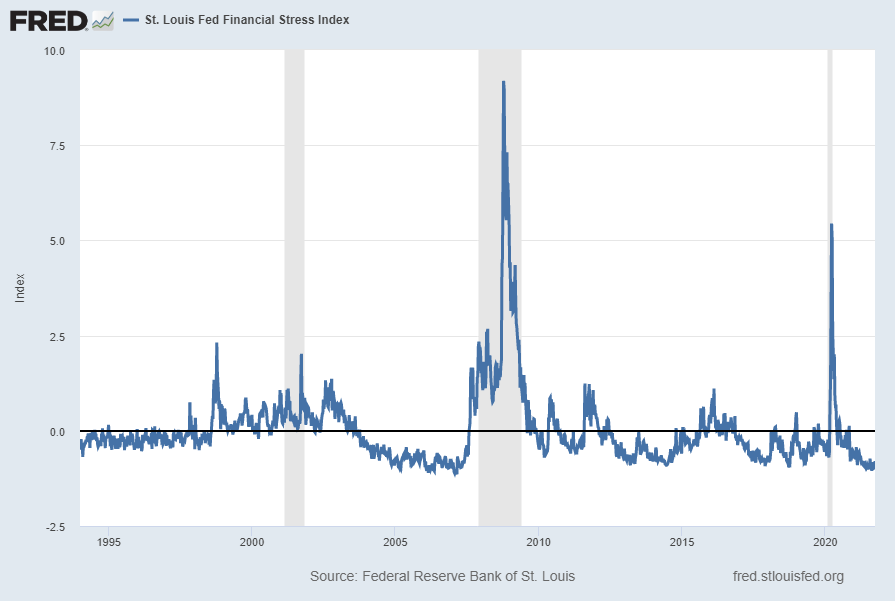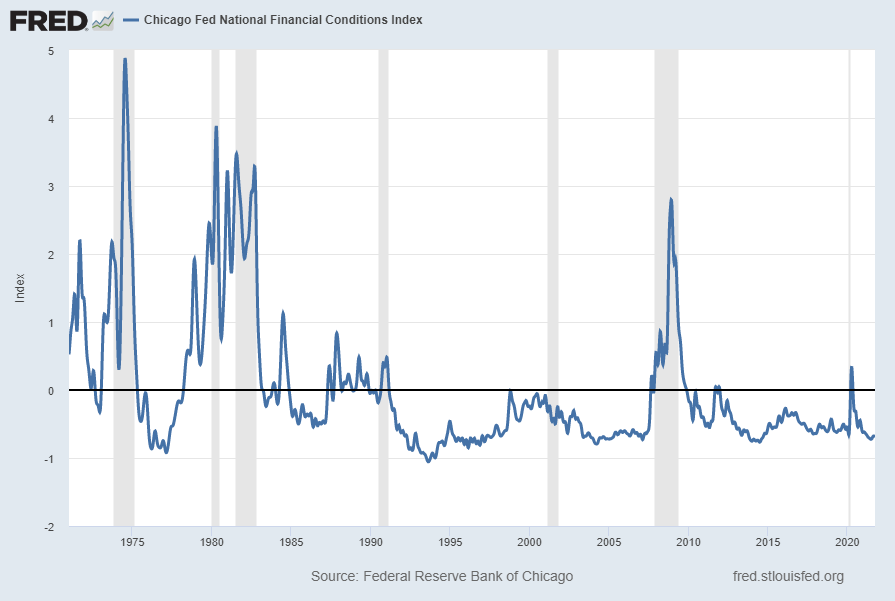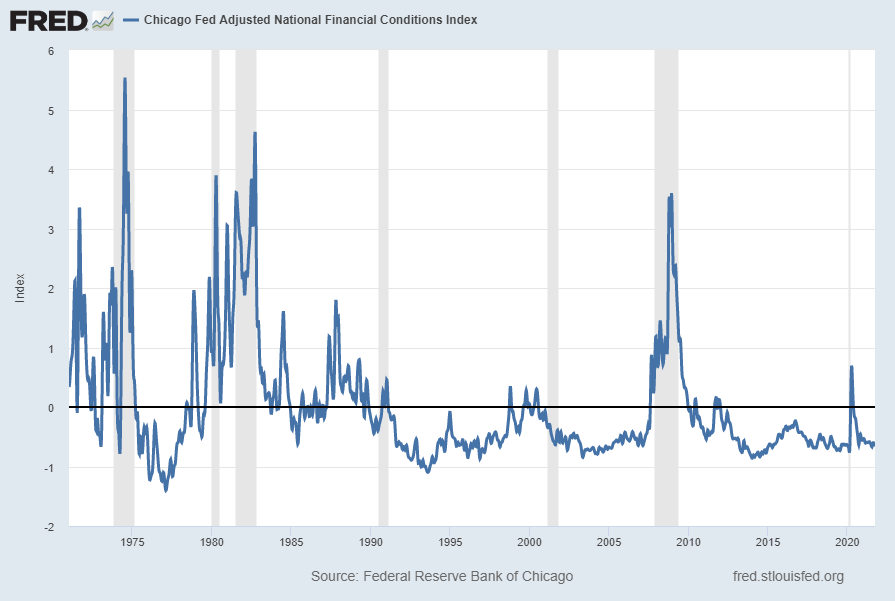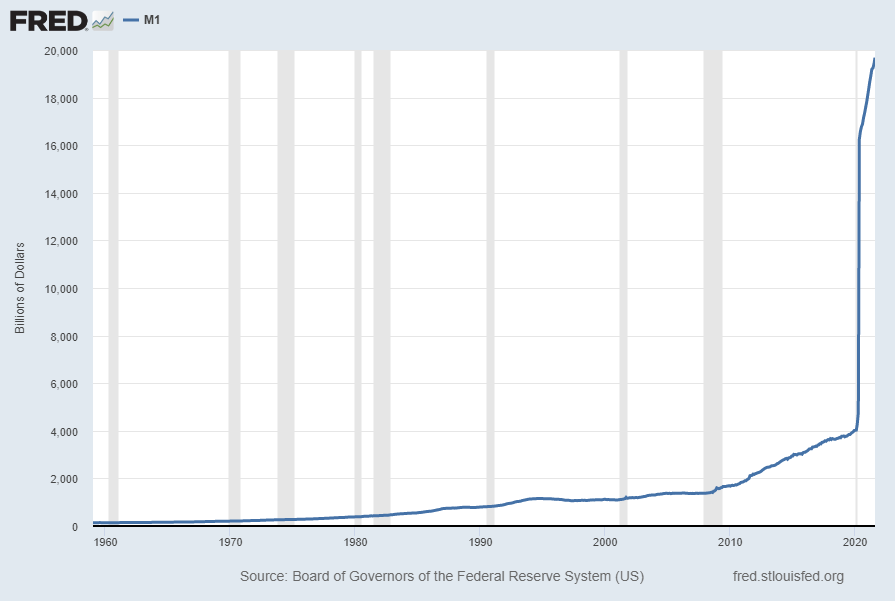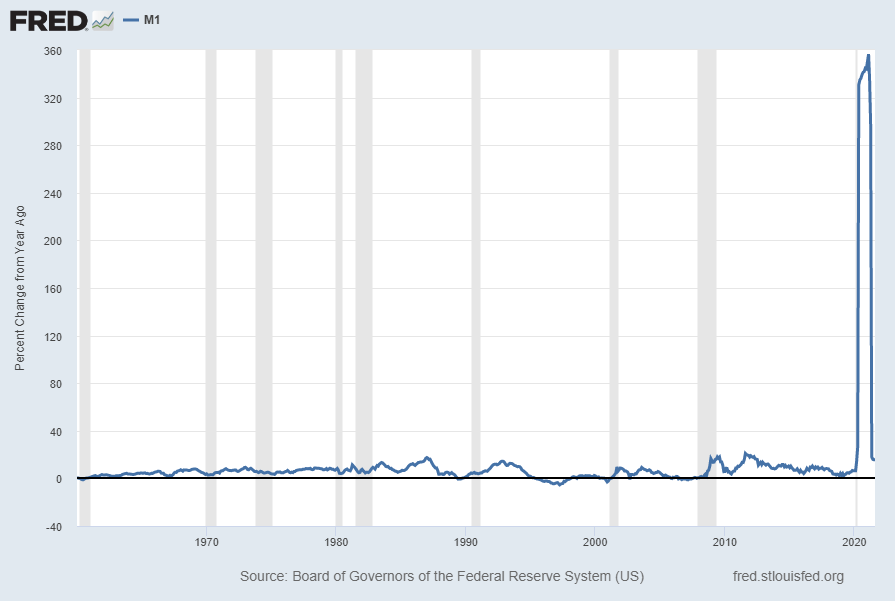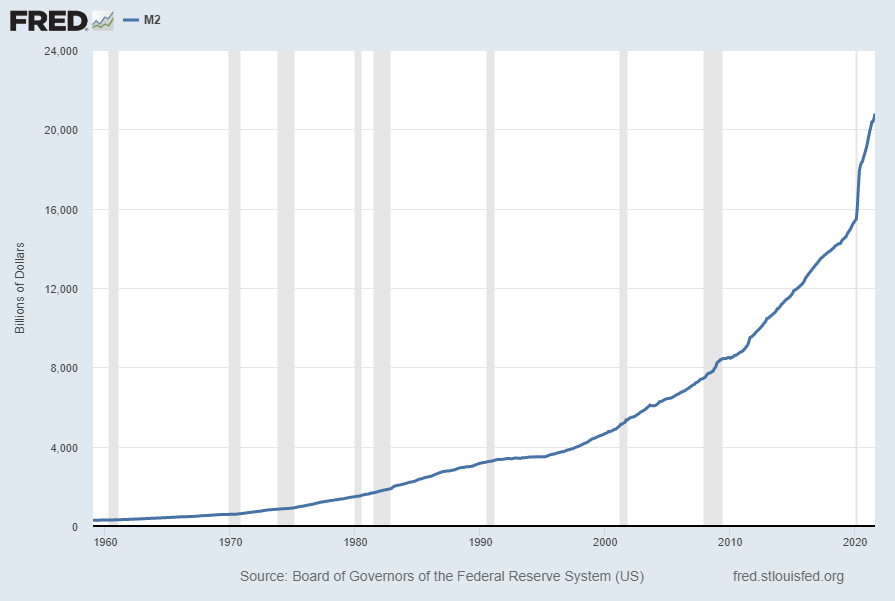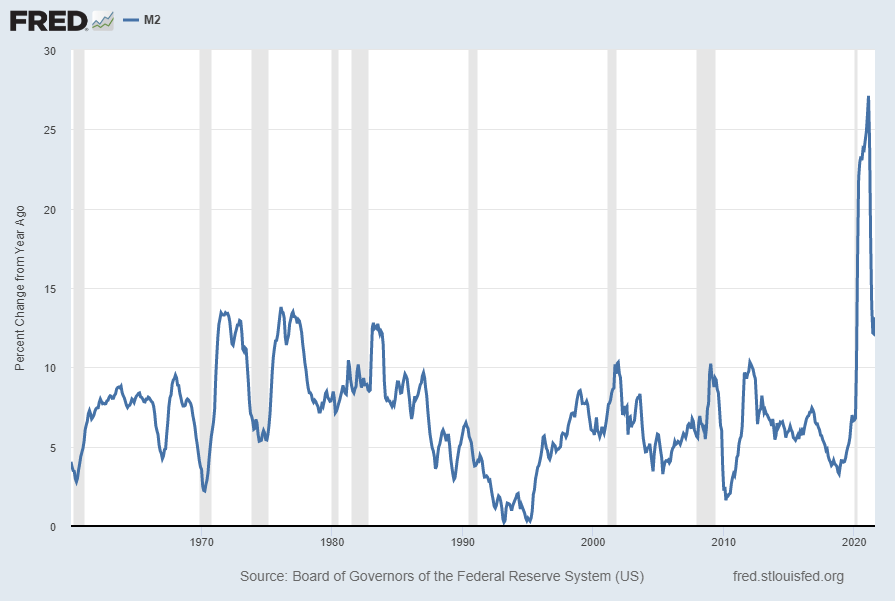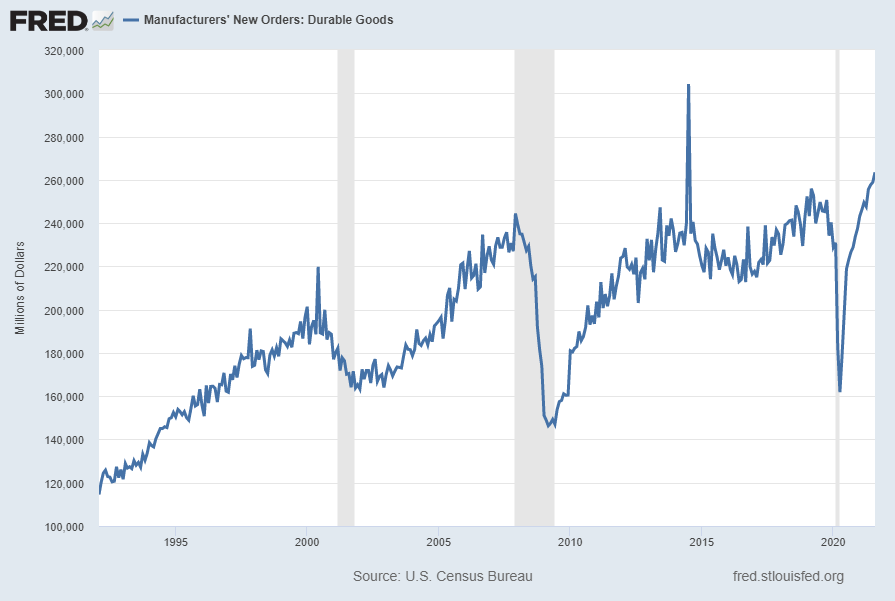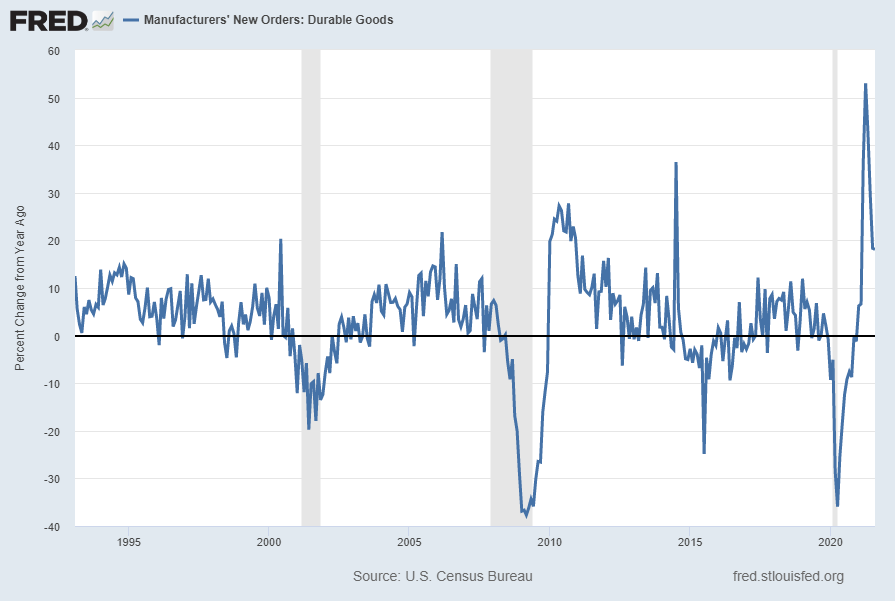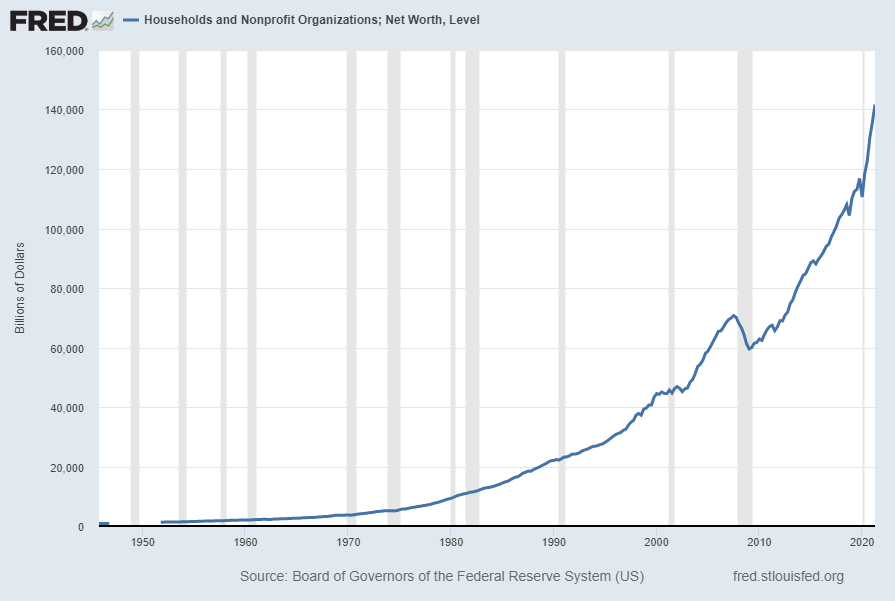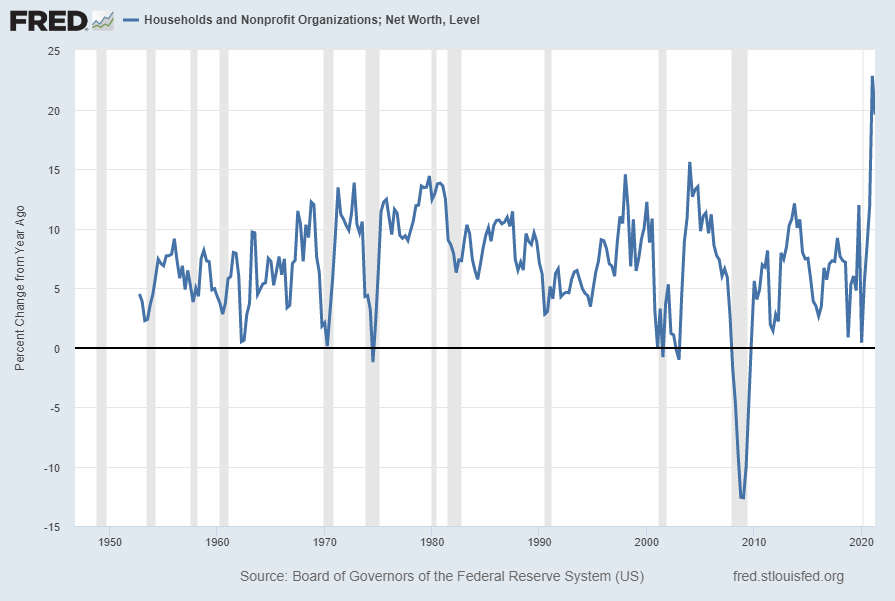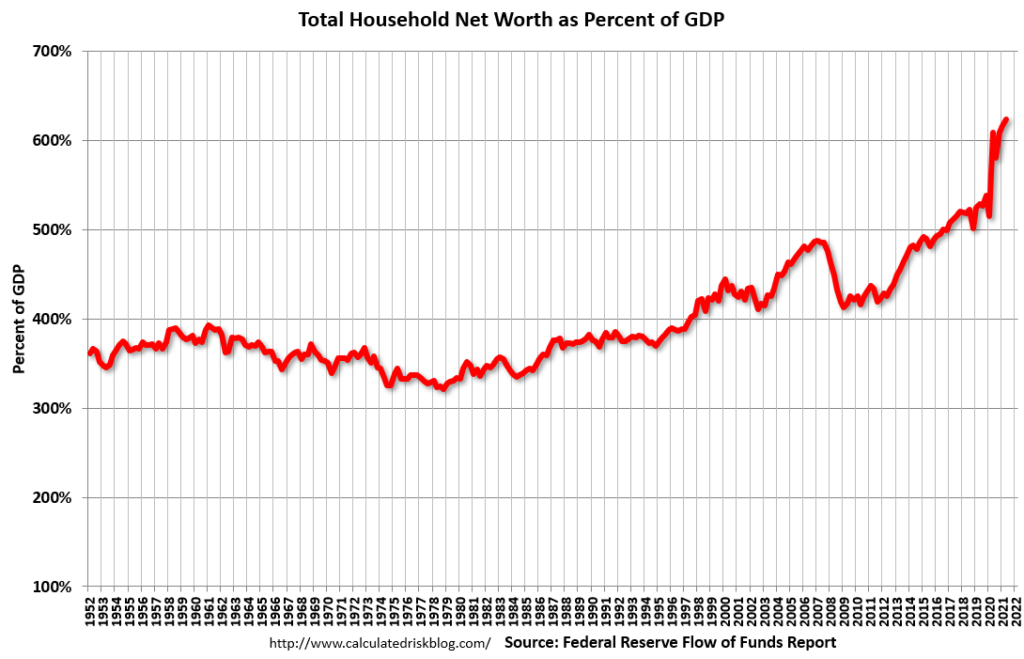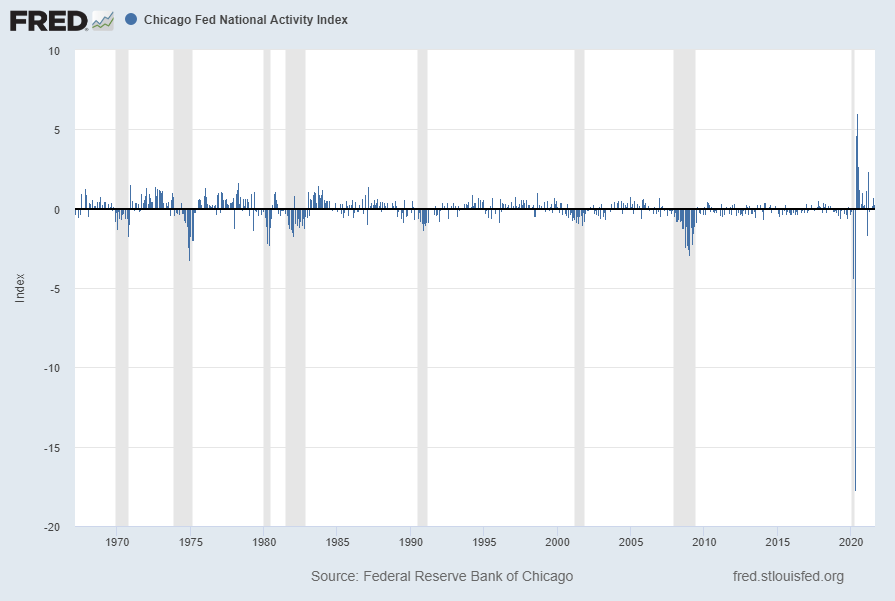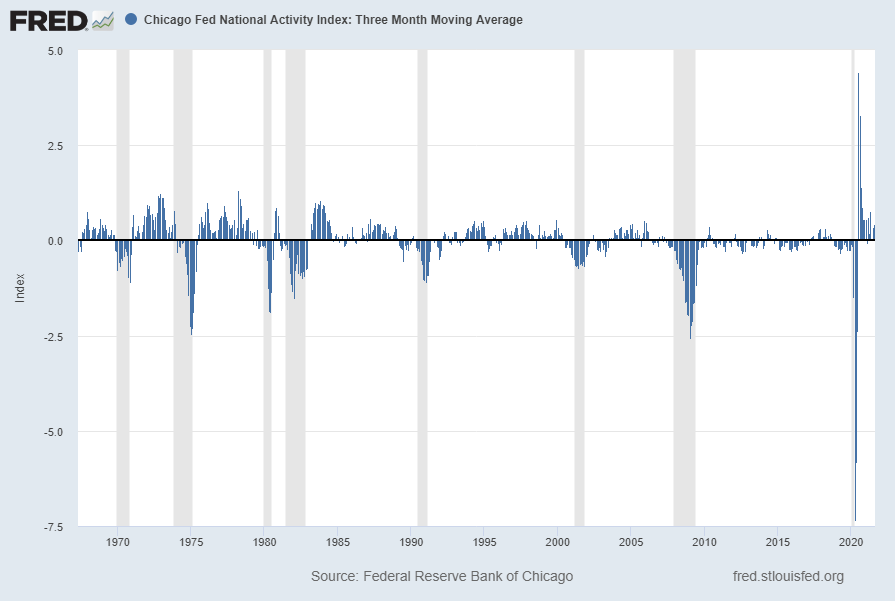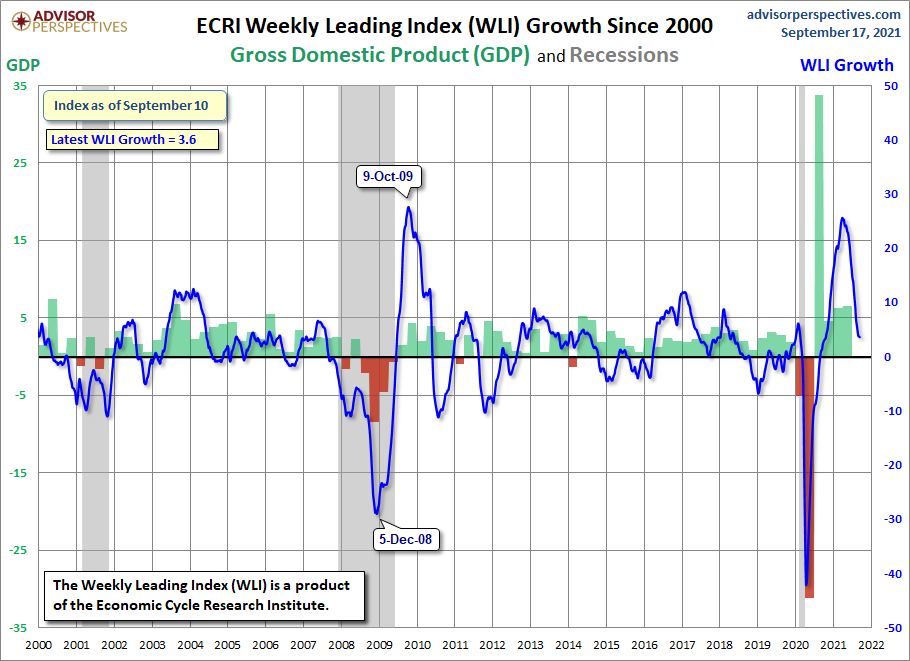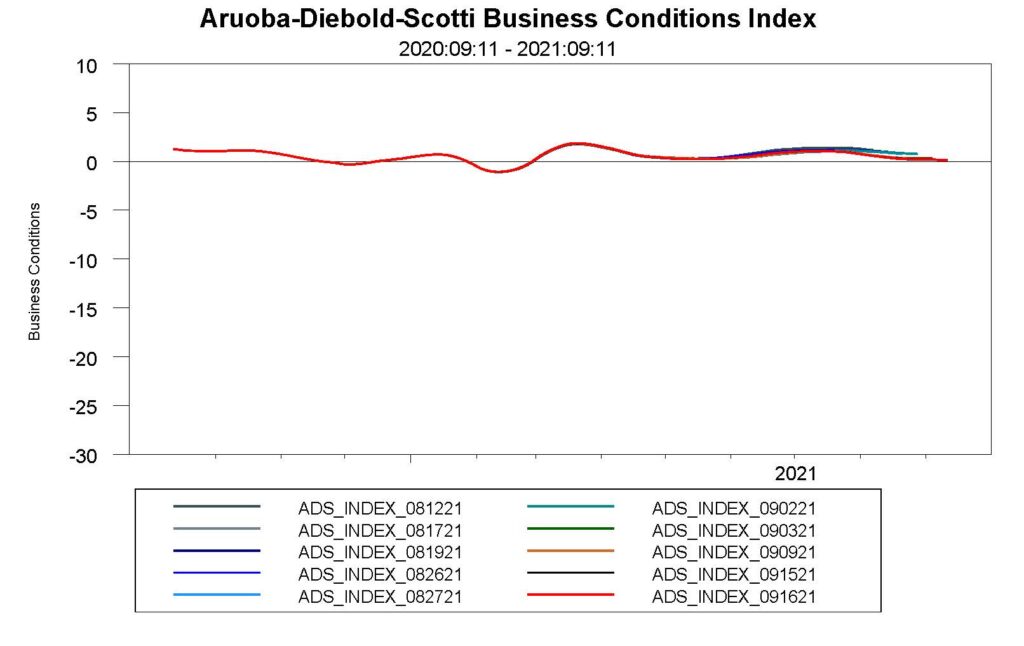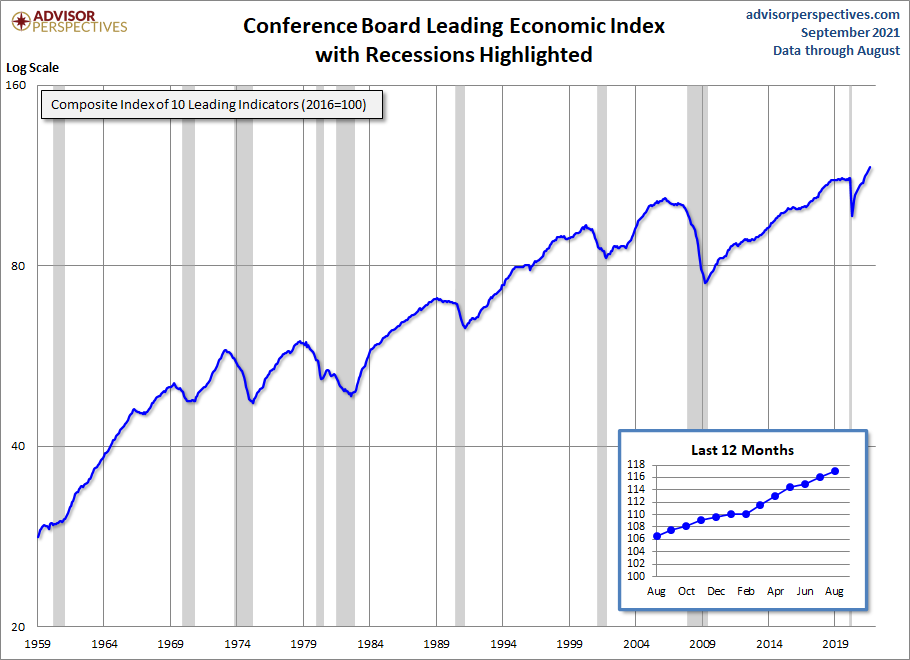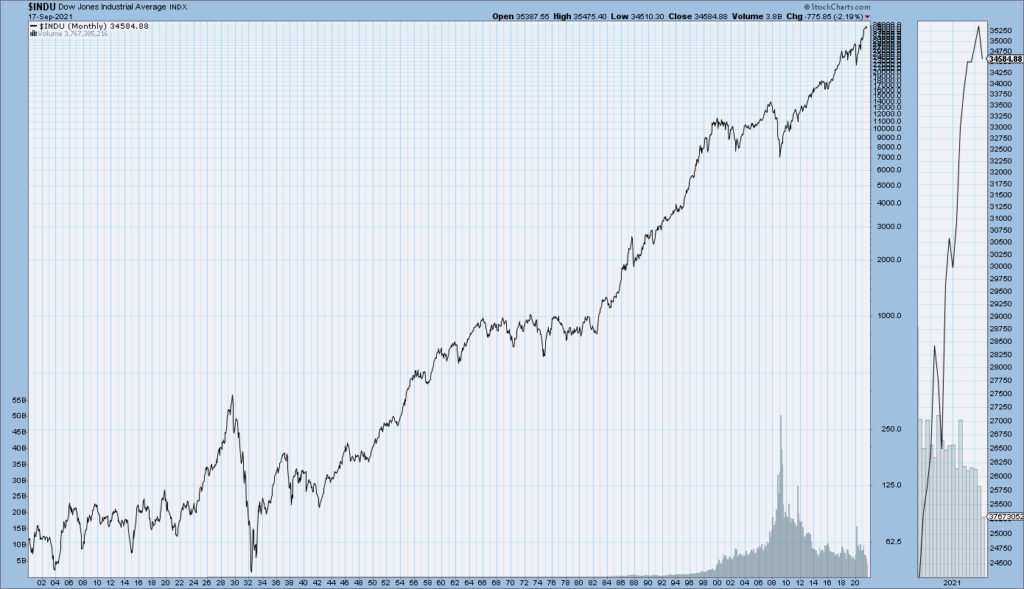On Wednesday, September 22, 2021 FOMC Chairman Jerome Powell gave his scheduled September 2021 FOMC Press Conference. (link of video and related materials)
Below are Jerome Powell’s comments I found most notable – although I don’t necessarily agree with them – in the order they appear in the transcript. These comments are excerpted from the “Transcript of Chairman Powell’s Press Conference“ (preliminary)(pdf) of September 22, 2021, with the accompanying “FOMC Statement” and “Summary of Economic Projections” dated September 22, 2021.
Excerpts from Chairman Powell’s opening comments:
Today the Federal Open Market Committee kept interest rates near zero and maintained our current pace of asset purchases. These measures, along with our strong guidance on interest rates and on our balance sheet, will ensure that monetary policy will continue to support the economy until the recovery is complete.
Progress on vaccinations and unprecedented fiscal policy actions are also providing strong support to the recovery. Indicators of economic activity and employment have continued to strengthen. Real GDP rose at a robust 6.4 percent pace in the first half of the year, and growth is widely expected to continue at a strong pace in the second half. The sectors most adversely affected by the pandemic have improved in recent months, but the rise in COVID-19 cases has slowed their recovery. Household spending rose at an especially rapid pace over the first half of the year, but flattened out in July and August as spending softened in COVID-sensitive sectors, such as travel and restaurants. Additionally, in some industries, near-term supply constraints are restraining activity. These constraints are particularly acute in the motor vehicle industry, where the worldwide shortage of semiconductors has sharply curtailed production. Partly reflecting the effects of the virus and supply constraints, forecasts from FOMC participants for economic growth this year have been revised somewhat lower since our June Summary of Economic Projections, but participants still foresee rapid growth.
Excerpts of Jerome Powell’s responses as indicated to various questions:
CHRIS RUGABER. Thank you. Thank you, thank you, Chair Powell. I have a question about jobs and the Fed’s schedule, the Fed’s policy framework that you laid out here. You and other Fed officials have often talked about expecting a job market pickup in September as more children return to school, freeing up more parents to work, COVID abating. You mentioned in the past the extra unemployment benefits expiring. There’s some real-time data suggesting that we may not be seeing much of a return of labor supply. So do you still expect to see that in the next couple of jobs reports? And how would a relatively weak jobs report in September affect your plans? Thank you.
CHAIR POWELL. So you’re right, we have a, really I’ll call it a unique situation where by many measures the labor market is tight. And 11 million job openings, very widespread, reports from employers all over the economy saying it’s quite difficult to hire people, wages moving up and that. So quite a tight labor market. So our view, I think widespread view a few months ago was that several things were coming together in the fall, including kids back to school, which would, you know, which would lighten caregiving duties, including the expiration of unemployment, extra unemployment benefits, and other things would come together to provide an increase in labor supply, and so we’d get out of this strange world where there’s lots of unemployed people and a high unemployment rate, but a labor shortage. And so what happened was Delta happened. And you had this very sharp spike in Delta cases. And I think — so that affects, for example, when schools are open 60 percent of time or when they’re always at a threat of being closed because of Delta, the Delta variant, you know, you might want to wait rather than going ahead and taking a job and starting work only to have to quit it three weeks later. You’re going to wait until you’re confident of that. So some of that may not have happened. Also people didn’t, you know, as you know, hiring and spending in these face-to-face service industries, travel and leisure, it just kind of stopped during those months. So we — so that — really the big shortfall in labor, in jobs was largely in travel and leisure and because of, clearly because of Delta. So that all happened. And so what we, [inaudible] didn’t happen. I think there’s still — it may just be that it’s going to take more time. But it still seems that inexorably people will — these are people who were largely working back in February of 2020. They’ll get back to work when it’s time to do that. It just may take longer time. You’re right, though, it didn’t happen with any force in September, and a lot of that was Delta. In terms of the, you asked also about the test for November. I think if the economy continues to progress broadly in line with expectations, then I think — and also the overall situation is appropriate for this, then I think we could easily move ahead at the next meeting or not, depending on whether we feel like that, those tests are met.
CHRIS RUGABER. Just a, If I could just quickly follow-up. I mean, what, how much of that will depend on what kind of jobs report we get for September? And, I mean, is it, you know, are you in a data-dependent phase here where you need to see certain numbers going ahead? Or are we at a point where you’ve accumulated enough progress that –
CHAIR POWELL. So it is, it’s accumulated progress. So, you know, for me, it wouldn’t take a knockout, great, super strong employment report. It would take a reasonably good employment report for me to feel like that test is met. And others on the Committee, many on the Committee feel that the test is already met. Others want to see more progress. And, you know, we’ll work it out as we go. But I would say that, in my own thinking, the test is all but met. So I don’t personally need to see a very strong employment report, but I’d like it see a decent employment report. I mean, it’s not, it’s, again, it’s not to be confused with the test for liftoff, which is so much higher.
also:
JEAN YUNG. Thank you, Michelle. Chair Powell, I wanted to ask about how the Fed would balance the two parts of its dual mandate if inflation stays elevated but we still have a labor shortage and participation remains lower than ideal? Would you hold off on raising rates? Or how would you think about that? Thank you.
CHAIR POWELL. Well, let me say one thing, you’re looking for conditions consistent with maximum employment to liftoff, and those conditions can change over time. So you’re not necessarily bound by a particular level of the unemployment rate or the participation rate or anything else like that, which can change over time. But more to your point really, we actually have a paragraph in our framework, and something like this has been there for a long time. It’s, I think it’s paragraph six. And you’re talking about a situation in which the two goals are not complementary, they’re somehow in tension. And if we judge thats effect, that is the case, what it says is we take into account the employment shortfalls and inflation deviations and the potentially different time horizons over which employment and inflation are projected to return to levels judged consistent with mandate. So, we used to call that the balanced approach paragraph because it had those words. So it’s a very difficult situation for any Central Bank to be, pardon me, to be in a situation where the two goals are in tension. And that paragraph tries to address it by saying we would sort of weigh the equities between the two. How long will it take? And how big are the gaps? And that kind of thing. We don’t really think we’re in that — we’re sort in that situation, I’d say, in a short-term way. But we think, we do expect that this is sort of because of the COVID shock and the reopening and all that, you’re seeing this temporarily.
also:
SCOTT HORSLEY. Thank you, Mr. Chairman. You talked a little bit about inflation expectations. And there does seem to be something of a divide between market expectations and the views of professional economists, which are pretty much in line with the FOMC members, and lay people’s expectations, at least as reflected in the recent New York Fed survey. How much weight do you put on lay people’s expectations? And what do you think accounts for that divide?
CHAIR POWELL. So within, let’s just take the household surveys generally. The New York Fed survey, let me talk about that specifically, and this is from the New York Fed. It’s only an eight-year old survey, and it does seem as though the, they’re looking three years out. And it seems like there’s a high correlation between three year and one year. For the most part, surveys are showing that households expect higher inflation in the near-term, but not in the longer-term. And that’s also what expectations are showing. So there are many, many different inflation measures, of course. And that’s why we have this thing called the CIE, which is the, it’s an index of, it’s market-based measures. It’s professional forecasters and it’s household surveys. And you just put them all, it’s not, you know, it doesn’t have a lot of grand theory about it. You put them all in, and you measure the change. So you should be — and also you measure things like the dispersion and that sort of thing, so you can look at all that. And, you know, it tells a story of inflation expectations moving up. Many of the different measures will also show inflation expectations moving back up to where they were in, say 2013, which was before the really — the drop in inflation expectations broadly happened in ’14 and ’15, around then. So, that’s not a troubling thing. But, you know, inflation expectations are terribly important. We spend a lot of time watching them. And if we did see them moving up in a troubling way and running persistently above levels that are really consistent with our mandate, then, you know, we would certainly react to that. But we don’t really see that now. We see more of a moderate increase that is, the first part of which is welcome. And because, you know, inflation expectations had drifted down, and it was good to see them get back up a bit. But, again, we watch carefully.
_____
_____
The Special Note summarizes my overall thoughts about our economic situation
SPX at 4460.74 as this post is written
